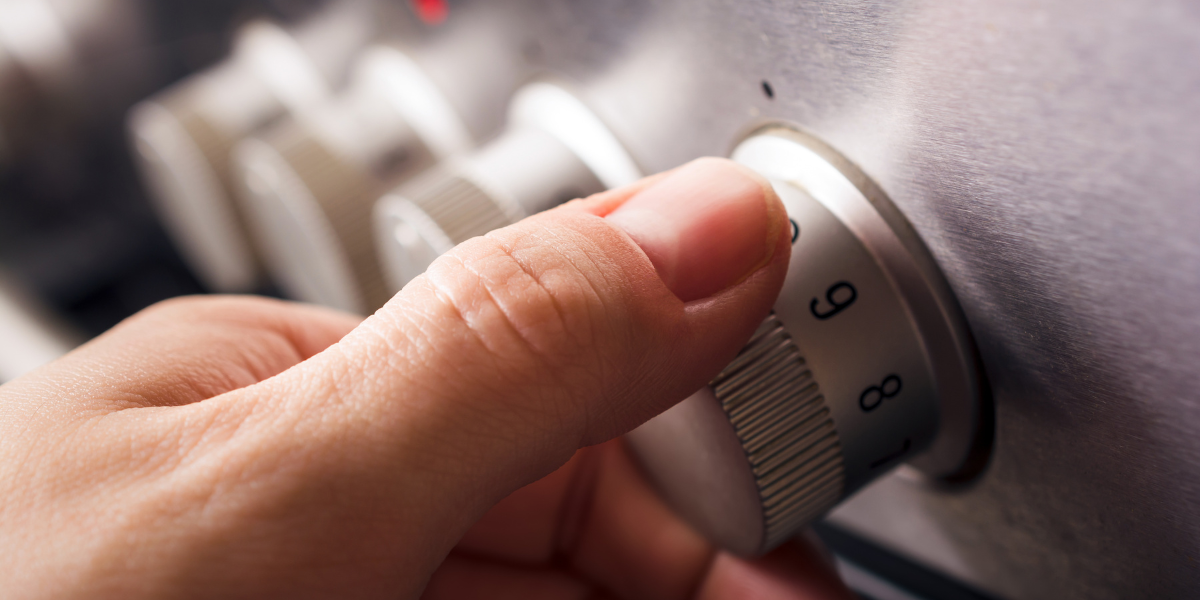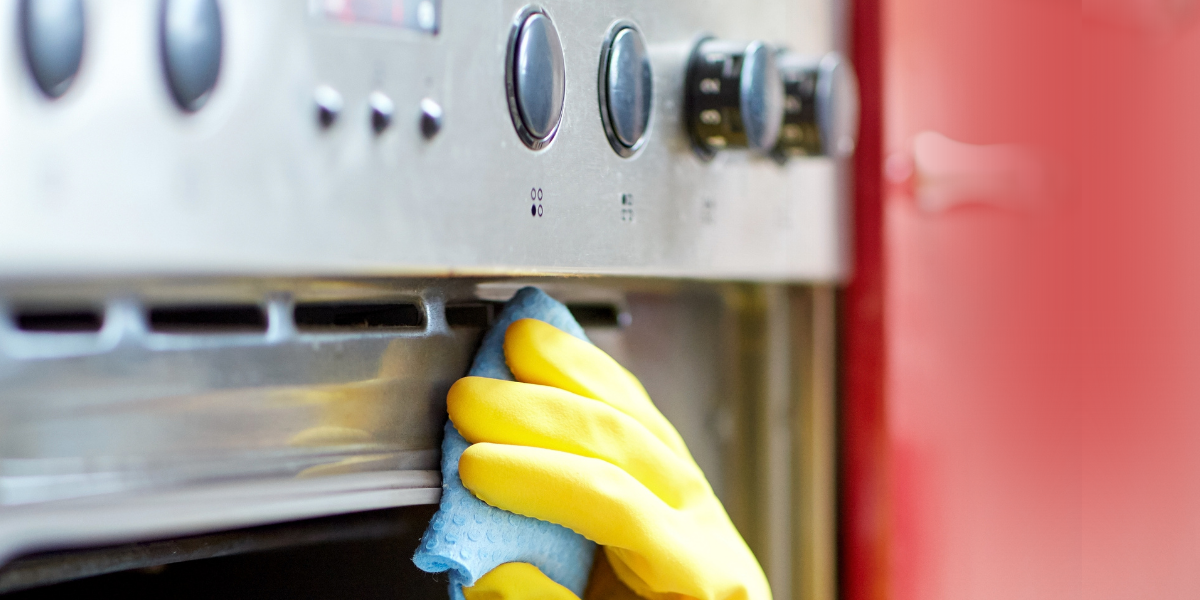Proper Use and Care of Your Range
Mastering the Range Cooktop and Oven
If you already own one, you know that your range oven is a versatile and indispensable appliance, allowing you to unleash your inner culinary maestro and create delicious dishes and mouthwatering meals. To unlock its full potential, it's essential to understand the various components of the range, and how to use and care for them properly for a long life, full of good meals.
Ranges typically include both a stovetop or cooktop and an oven. They come in various sizes, styles, and fuel types such as gas, electric, or induction. Choose one that best suits your home and needs. If you have owned one for a while, it's never too late to upgrade.
Key Components of a Range
- Cooktop Burners: Gas burners offer instant heat and flame control, while electric burners are widely available, easy to use, and provide consistent heat levels. Induction burners are energy efficient by using electromagnetism to heat the pan directly and shutting off automatically.
- Oven: The oven chamber is where the magic happens. It consists of heating elements that distribute heat evenly for baking, roasting, or broiling. Most ovens also feature convection capabilities, circulating hot air for faster and more even cooking.
- Control Panel: The control panel allows you to adjust the temperature, and cooking modes, and utilize the range functions. Use your owner's manual to familiarize yourself with the various buttons, knobs, and display features to get the most out of your range.
How to Use Your Range

Is It Necessary to Preheat the Oven?
Don’t skip this step! Preheating is essential for consistent and even cooking results. Select your desired temperature and allow the oven to reach it before placing your food inside the oven cavity. The higher the temperature you set, the longer it will take to heat up, so make sure to start early! Also, note that when cooking food with short preparation times, it is recommended to wait an additional 15 minutes after the preheated temperature is reached for better cooking results. When the oven door is opened, hot air escapes and the temperature drops significantly, so make sure that your range has that extra preheating time.
Which Oven Rack Should You Use?
Just as different dishes require different oven temperatures; they also require different rack positions. The middle rack is best for baking and roasting. The top rack is best for broiling or grilling as it utilizes the top heating element to crisp up your food. Some of the best foods to broil are salmon, chicken, or baked dishes that require a crunchy top layer. Use the lower rack for food that takes longer to cook, or to brown the underside of your food such as with Thanksgiving turkey or pizza. To get the most out of your range, adjust or remove the racks to accommodate various dish sizes. This will allow heat to be distributed more evenly.
Is Your Cookware Oven Safe?
It is important to select cookware that is oven-safe and appropriate for your range and cooking needs. For example, glass or ceramic dishes are best for baking, while metal pans are great for roasting. However, avoid placing metal dishes that have wooden or plastic handles or aluminum bases in the oven as they are not designed to withstand high temperatures. If you are in doubt about whether your cookware is oven safe, check your owner’s manual, or inspect the item to see if there is a picture of an oven on it or a temperature range which indicates whether it is suitable for the oven.
How Should You Load Your Range?
When placing your cookware inside the range, be careful not to overcrowd the dishes as this will block the airflow and result in uneven heating. There should be enough space around each dish for hot air to circulate, and for you to easily access and maneuver the dish/dishes while cooking. Consider using multiple racks when cooking more than one dish or opt for a spacious range oven if you are currently considering purchasing one.
How to Care For Your Range
So, now that we've reviewed how to properly use your range and enjoy its key features, let's talk about how to care for the range. Caring for your range oven ensures that it serves you and your home for many years to come.

What is the Best Way to Clean and Sanitize Your Range?
- Cooktop: The range cooktop should be cleaned after each use to prevent microbes and bacteria from building up the front of your range. A clean cooktop will also reduce the amount of odor present in your cooking area.
- Exterior: Wipe down the exterior surface regularly with a soft cloth and mild detergent. Avoid using abrasive cleaners and materials that may scratch or damage the finish, and ruin the appearance of your range.
- Oven Door: Clean the door glass panel with a non-abrasive cleaner as well or create your own DIY cleaner using a mixture of baking soda and water. Be careful cleaning areas where there are rubber and plastic seals, as these can deteriorate over time if exposed to chemicals or excessive pressure.
- Oven Self-Cleaning Function: Many range ovens feature a self-cleaning cycle that reduces the need for manual scrubbing. Follow the manufacturer's instructions carefully. When using the feature make sure the room is well-ventilated to avoid smoke and fumes, and do not leave the oven unattended.
- Oven Interior Cleaning: Remove oven racks and clean them separately with warm, soapy water. For the oven interior, use the same abrasive cleaner or DIY baking soda paste, to remove tough stains. To get the most out of the cleaning experience, allow the cleaner to soak through before wiping away the grime.
- Odors: It's normal and common for a range to develop persistent odors depending on the type of food that is cooked. Place a bowl of baking soda or a mixture of water and lemon juice inside and heat it at a low temperature to help neutralize the odors over time. You can also reduce the presence of odors by promptly packing food away after cooking and cleaning the surrounding area
Check Your Oven Temperature
It is recommended to check the heating ability and accuracy of your oven every 6 months to make sure that it's where it should be so that you always get good, proper cooking. Set the oven to 350 degrees and place an oven thermometer in the center of the oven, on a rack for at least 15 minutes. Make sure that it is not touching any sides of the oven or the oven walls. Check the temperature reading on the oven thermometer and compare it to what is displayed on the oven control panel. If the temperatures are consistently off, you will likely need to recalibrate the temperature control, using your owner's manual. If this does not resolve the issue, you may need to change your oven sensor either the DIY way or by calling a professional!
Does a Range Require a Maintenance Routine?
Just as with any appliance in your home, it is important to schedule routine maintenance for your range to keep it in top shape. While it may seem like additional labor and costs, taking care of your range is an investment that will save you money and time in the future by keeping your range running better for longer.
- Clean or replace range filters.
- Check for loose wiring and connections.
- Inspect the ventilation system.
- Replace worn-out or damaged components.
- Consult the manufacturer's guidelines for detailed maintenance instructions.
Congratulations, you are now ready to join Master Chef! By understanding the range parts, following proper usage techniques, and maintaining regular care, you can unlock the full potential of your range. It's time to don your chef's hat, grab your favorite recipe, and let your range take center stage! If you would like to learn how to get the most out of all your household appliances, check out our full
appliance guides for all the ins and outs of home care.
